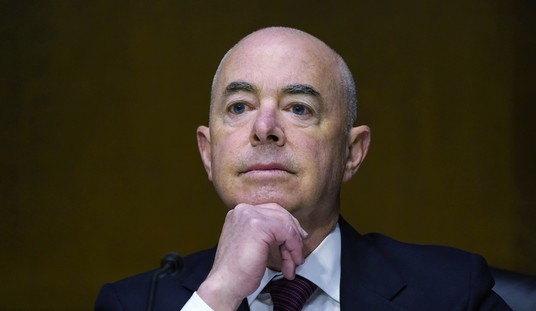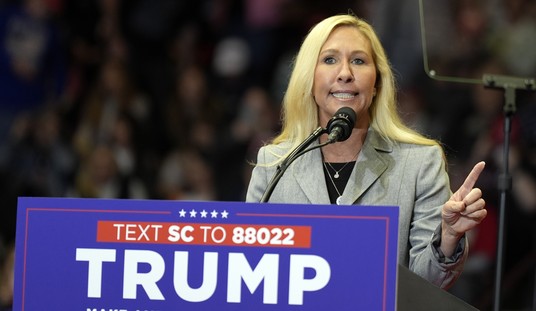When Herman Cain proposed his 9-9-9 plan, many conservatives became energized, despite their misgivings with the fine print of the plan. It wasn’t so much the details of the proposal that excited the base, as most conservatives intuitively recoiled from a consumption tax; it was the boldness of the plan that resonated with them. Cain’s 9-9-9 brought some excitement to a race that was defined by a frontrunner who offered 160 pages of banal fluff. Nevertheless, his plan was too flawed to be utilized as a viable rallying cry in the general election. Perry appears to have proposed both a viable and bold economic plan, albeit with some inevitable flaws.
Here is a synopsis of all of the major components.
Tax Plan
The centerpiece of the plan is a flat individual income tax of 20%. This would serve as a vehicle for massive economic growth, as it offers a huge tax cut for job-creators who currently pay as much as 35%. However, unlike the traditional Steve Forbes flat tax, this proposal would keep the deductions for mortgage interest, charitable contributions, and state and local taxes for those earning less than $500,000 (over 99% of taxpayers). It would also offer a standard deduction of $12,500 per household members. Consequently, a family of four earning $50,000 would have a zero tax liability. Update: Phillip Klein reports that the employer tax exclusion for healthcare would remain until Obamacare is repealed.
Moreover, the entire system would preserve the option to remain under the current tax code. As such, the 47% who have zero tax liability and the 29% who have a positive tax liability (as a result of the EITC and Additional Child Tax Credit), would have no incentive to move to the flat tax. Accordingly, there would be two shortcomings to this plan:
1) There would be no broadening of the tax base.
2) Any static score of its effect on revenues would be disastrous because it keeps all of the low and middle income revenue the same, while drastically diminishing the revenue from higher income earners. Although, the CBO wouldn’t be able to score this as a loss because the entire flat tax is optional.
3) It keeps the market-distorting mortgage interest deduction.
The bottom line is that it is very difficult (politically) to broaden the tax base. I would have liked a 15% flat tax with no deductions, a smaller standard deduction, and mandatory reform of EITC and ACTC (no opt out). But that is politically untenable at this point. At the very least, this plan will provide such an opportunity for economic growth that new taxpayers are created, and ultimately, revenues will increase. Dynamic scoring is always a winner. That was one of the big lessons of the Reagan years. It will also eliminate most of the other market-distorting deductions and credits. Finally, it is important to note that Perry plans to limit federal spending to 18% of GDP. Restoring the federal government back to its proper role won’t require as much revenue as before.
Many of their periphery details of the tax plan are excellent:
- A 20% flat corporate tax with credits only for R&D and capital investments.
- Corporations would also get a one-time repatriation rate of 5.25%, while moving towards a territorial system in the long-run that will only tax in-country income.
- Elimination of CapGains, dividends, and death taxes
All of this is super pro-growth.
Social Security
The details of the entire plan have not been released, and might not be clear until there is an actual piece of legislation, but Perry joins some of the other candidates (except Romney) in endorsing an option for private retirement accounts. Also, state employees would be allowed to opt out of the system altogether, and create a county or state systems modeled after Galveston, Texas.
Another aspect of the plan is the elimination of taxes on benefits, even for current retirees. Since 1983, the government has taxed the “benefits” of retirees who earn income, interest, and dividends with a graduated scale. This has served as a perverse incentive against working beyond retirement. It is also an unfair form of double taxation on 17 million retirees earning as little as $25-50,000 after retirement.
In terms of raising revenue, elimination of this tax would only be a minor loss. Taxation of benefits raises about $24 billion, just 3% of the annual cost of OASDI. This is an excellent provision of the economic plan.
Additionally, Perry would gradually raise the retirement age and limit the rate of growth of benefits to rich seniors. As a conservative, I’m not so excited about means-testing something that everyone paid into, but it is a step in the right direction.
My only quibble with the plan is that he uses the Highway Trust Fund as a paradigm for protecting the integrity of a pay-as-you-go system. As we’ve discussed in these pages, the Highway Trust Fund has been raided for mass transit projects and other pork, and is no longer a pay-as-you-go-system, as the federal gasoline tax is no longer sufficient to cover its expenses.
Medicare and Medicaid
For Medicare, Perry proposes a gradual increase in the eligibility age and a move towards free market options, in which the costs are defined and transparent. There are many conservative free-market options out there, and it would have been nice for him to elaborate on them. Then again, it’s hard to offer direct reforms to both third rails of politics in one shot.
For Medicaid, Perry offers a shoutout to what is becoming a growing consensus among conservatives; block granting Medicaid back to the states and letting them innovate.
Regulations
- Repeal of Obamacare, Dodd-Frank, and Sarbanes-Oxley (in line with most other candidates)
- An immediate moratorium on all new and pending regulations (there are thousands in the pipeline)
- Audit all regulations implemented after 2008 and determine if each one is affordable, effective, and if it does “more harm than its purported good”
- Any future regulation would automatically sunset after 7 years, unless Congress votes to reauthorize it
- Each regulatory agency would be given a ”regulatory budget” limiting the cost of its regulations that may be promulgated per year
- The creation of a “simple and searchable online database of all federal regulations currently in force – including succinct summaries, all public comments, and all related cost-benefit analyses
As you can see, this plan will not only repeal regulations, but institute structural reform to preclude future onerous regulations.
Spending
Governor Perry is supporting the plan of congressional conservatives to pass a balanced budget amendment that contains a taxpayer protection. He is also seeking to balance the budget by 2020 and limit spending to 18% of GDP. He would cut $100 billion in non-defense discretionary spending during his first year in office. Specifically, he proposes cuts and consolidations in the Department of Energy, elimination of Freddie and Fannie, and the repeal of the Davis-Bacon Act.
Perry is also proposing some structural reforms to the budget process. He wants to make the annual concurrent budget resolution – which is currently non-binding – subject to the president’ signature. This will force an automatic spending cap every year.
Some other proposals include:
- An automatic protection against a government shutdown, which would set spending at the previous year’s level
- Clamp down on the use of “supplemental spending bills” to abuse funding for emergencies
- Eliminate baseline budgeting
- Reform the CBO so it can engage in dynamic scoring
- Impose Paygo on new federal programs. There are currently 77 welfare programs because Congress doesn’t have the gumption to repeal one before instituting another. Perry would require one program be eliminated before a new one is instituted.
- Freeze federal civilian hiring and salaries until budget is balanced
Overall, while the tax plan has some excellent components and some ok ones, the spending plan is phenomenal. It is truly heartwarming to see the RSC’s Cut, Cap, and balance plan – a pipe dream of a few conservatives in Congress – actually become major national policy. I would just caution that a spending goal of 18% of GDP would require the elimination of several more cabinet-level departments.
It is refreshing to see the candidates begin to offer bold conservative solutions, instead of playing it safe against a weak and eminently vulnerable incumbent president. Republicans must not seek power for power’s sake. Perry’s Cut, Balance, and Grow plan is a prodigious model of what we should seek to achieve.














Join the conversation as a VIP Member